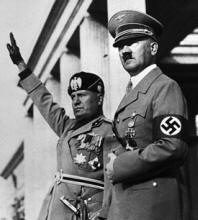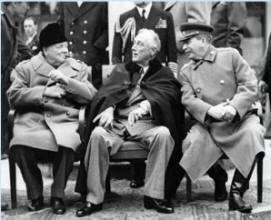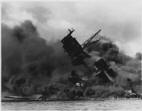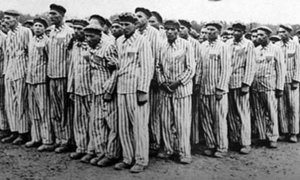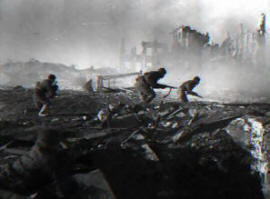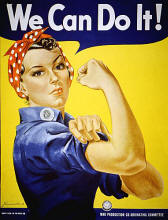|
USII.6a Causes and Events that Led to American Involvement in WWII |
|||
|
The student will demonstrate knowledge of the major causes and effects of
American involvement in World War II by a) identifying the causes and events that led to American involvement in the war, including the attack on Pearl Harbor. |
|||
|
How did post-World War I Europe set the stage for World War II? |
How did the rise of fascism affect world events following World War I? |
||
|
Political and economic conditions in Europe following World War I led to the rise of fascism and to World War II |
The rise of fascism threatened peace in Europe and Asia. |
||
|
Causes of World War II • Political instability and economic devastation in Europe resulting from World War I – Worldwide depression – High war debt owed by Germany – High inflation – Massive unemployment |
• Rise of Fascism – Fascism is a political philosophy in which total power is given to a dictator and individual freedoms are denied. – Fascist dictators included Adolf Hitler (Germany), Benito Mussolini (Italy), and Hideki Tojo (Japan). – These dictators led the countries that became known as the Axis Powers. |
||
|
How did American policy toward events in Europe and Asia change over time? |
|||
|
As conflict grew in Europe and Asia, American foreign policy evolved from neutrality to direct involvement. |
|||
|
The Allies • Democratic nations (the United States, Great Britain, Canada) were known as the Allies. The Soviet Union joined the Allies after being invaded by Germany. • Allied leaders included Franklin D. Roosevelt and later Harry S. Truman (United States), Winston Churchill (Great Britain), Joseph Stalin (Soviet Union) Gradual change in American policy from neutrality to involvement • Isolationism (Great Depression, legacy of World War I) • Economic aid to Allies • Direct involvement in the war |
War in the Pacific • Rising tension developed between the United States and Japan because of Japanese aggression in East Asia. • On December 7, 1941, Japan attacked the United States at Pearl Harbor without warning. • The United States declared war on Japan. • Germany declared war on the United States. <-- <-- <-- Pearl Harbor - USS Arizona burned for two days after being hit by a Japanese shell. Parts of the ship were salvaged, but the wreck remains at Pearl Harbor to this day. |
||
|
USII.6b WWII - Major Events and Turning Points |
|||
|
The student will demonstrate knowledge of the major causes and effects of
American involvement in World War II by b) describing the major events and turning points of the war in Europe and the Pacific. |
|||
| What were the major events and turning points of World War II? | What was the Holocaust? | ||
| Despite initial Axis success in both Europe and the Pacific, the Allies persevered and ultimately defeated Germany and Japan. |
The Holocaust is an example of
prejudice and discrimination taken to the extreme.
• Tactics |
||
|
Major events and turning points of World War
II • Germany invaded Poland, setting off war in Europe. The Soviet Union also invaded Poland and the Baltic nations. • Germany invaded France, capturing Paris. • Germany bombed London and the Battle of Britain began. • The United States gave Britain war supplies and old naval warships in return for military bases in Bermuda and the Caribbean. • Japan bombed Pearl Harbor. • After Japan bombed Pearl Harbor, Germany declared war on the United States.
•
Battle of Midway -
The United States declared war on Japan and Germany.
Battle of Stalingrad
- 1942 |
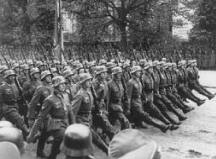 September 29-30 1939, German troops parade through Warsaw after the surrender of Poland --> --> |
||
|
USII.6c Impact of WWII |
|||
|
The student will demonstrate knowledge of the major causes and effects of
American involvement in World War II by c) describing the impact of World War II on the home front. |
|||
|
How did Americans at home support the war effort? |
What effect did the war have on race relations in America? |
||
| World War II affected every aspect of
American life. Americans were asked to make sacrifices in support of the war effort and the ideas for which we fought. American involvement in World War II brought an end to the
Great Depression. Factories and workers were needed to produce goods to
win the war. |
|
The need for workers temporarily broke down some racial
barriers (e.g., hiring in defense plants) although discrimination against
African Americans continued. While many Japanese Americans served in the armed forces, others were treated with distrust and prejudice, and many were forced into internment camps. |
|
